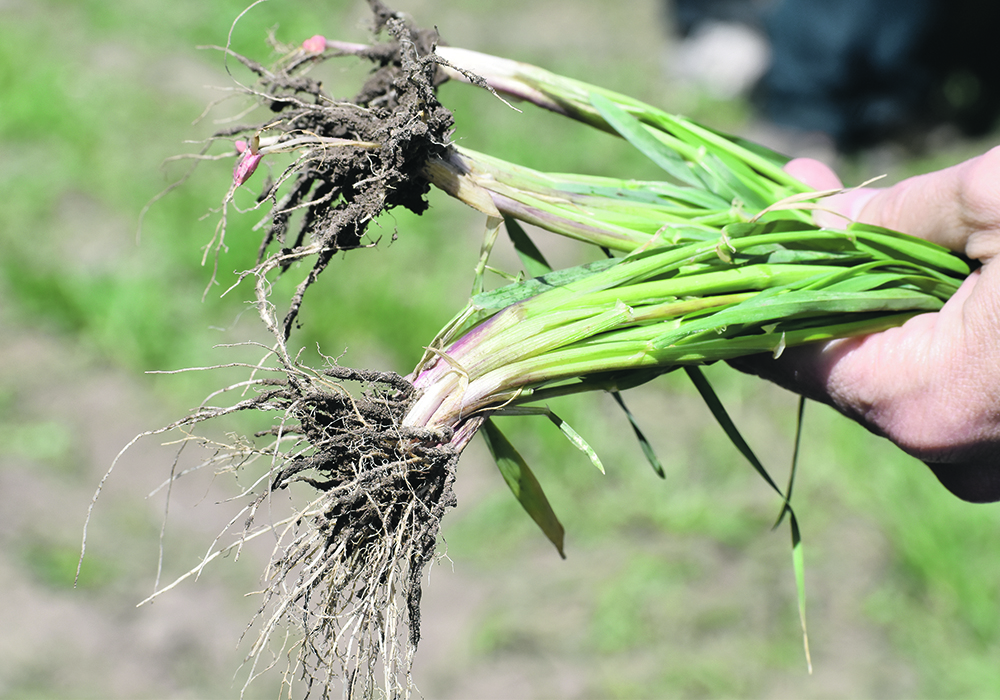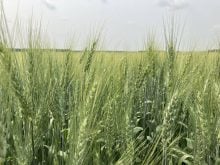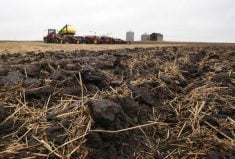Researchers discover the gene that regulates when roots stop growing, which occurs within hours of a lack of phosphorus
Phosphorus, an essential component of agricultural fertilizers, is a limited resource, and that is driving plans to use it more efficiently.
The volume of phosphorus is defined by the global distribution of mined rock phosphate. According to the U.S. Geological Survey, the economically extractable phosphate rock reserves could last 200 years or more, but that assumes zero growth.
Other scientists have suggested the world will reach peak phosphorus supplies in 50 to 100 years from now, and that shines a spotlight on what some in the industry consider to be wastefulness in how phosphorus is used.
Read Also

Drones now used to assess wildlife crop damage in Saskatchewan
Wildlife damage in Saskatchewan crops is now assessed by drones and artificial intelligence.
Only about 20 percent of the mineral in phosphate rock reaches human food. Almost 40 percent is lost during mining processes. Fifty percent is lost in the food chain, while only a percentage of manure is actually recycled back into the crop fields.
Manure application, while valuable, does not always meet phosphorus needs in large-scale agriculture.
And once the global phosphorus supply is used up, it can’t be re-made. There is no synthetic version to pick up the slack.
Couple all that with the fact that, while plants naturally absorb phosphorus as inorganic phosphate from the soil, when there is a lack of phosphorus, roots stop growing, which puts at risk their ability to forage for water and nutrients.
Now, researchers at Michigan State University have discovered a specific gene that regulates when the roots of a plant stop growing and they have identified this reaction as happening within hours of a lack of phosphorus.
Using computational models to build gene regulatory networks, the researchers isolated a specific gene called Arabidopsis root-specific kinase 1 (ARSK1) that regulates the Target of Rapamycin (or TOR complex), which is the key developmental regulator in plants and fungi. When a plant is starved of phosphorus, kinase 1 downregulates the TOR complex, which signals the plant’s roots to stop growing.
“The response to phosphorus deficiency has been intensively studied in the model plant Arabidopsis thaliana,” said Hatem Rouached, assistant professor in the university’s College of Agriculture and Natural Resources and a member of the Plant Resilience Institute. “Most of the work to date has studied this (root) response after at least one day of exposure to a lack of phosphorus but much less attention has been paid to earlier time points (a few hours) of phosphorus deprivation.”
He said while several proteins control the inhibition of primary root growth under days of phosphorus deficiency conditions, what actually triggers that root response in the early hours of the mineral’s shortfall has remained elusive.
“This is a significant knowledge gap because the reduction of primary root elongation in condition of phosphorus deficiency is likely the result of early, but yet unknown, stress responses,” said Rouached.
A mystery around low phosphorus levels has been that, when soil does not contain enough of the mineral, plants are thought to take up more iron, which can become toxic at higher levels. At first, it was thought that iron toxicity caused the plants’ roots to stop growing. But the researchers discovered that the roots actually stopped growing before any iron accumulation had occurred.
“When plants accumulate iron, they produce reactive oxygen species (ROS),” he said. “ROS can cause damage to the basic building blocks of the cell, including DNA, protein, and lipids.”
ROS are free radicals and are a type of unstable molecule. It contains oxygen and reacts with other molecules in a cell.
“To date, we do not know how plants accumulate this iron,” he said. “It could be taken up from the soil solution or translocated from the shoot to the root. But in our work, we discovered that root elongation is inhibited way before the iron over-accumulation in the roots. Therefore, there is a mechanism that is activated by a lack of phosphorus to stop root growth in an iron-independent manner. This is the mechanism that we discovered.”
Exactly what happens when there is low phosphorus and a condition leading to iron toxicity are complex interactions between the nutrients.
“Accumulating evidence from different plant species points to a genetic basis for an interaction between the two,” he said. “For example, in Arabidopsis, it has become apparent that iron is accumulated at higher levels in phosphorus-starved plants and that the striking aspect of the root architecture, the inhibition of primary root elongation when plants are grown in a phosphorus-deficient medium, is influenced by the iron concentration on the medium. Consistently, despite the small concentration of phosphorus in the medium, the reduction of iron concentration in the [same] medium leads to the recovery of the primary root elongation.”
Why the gene, root-specific kinase 1, signals a plant’s roots to stop growing is essentially based on the plant’s need and ability to adjust its growth to available resources.
Low phosphorus levels in the soil could result from “tired” soil from overuse, damage, or leaching of minerals from excessive rains.
“Even though phosphorus is available in soil, it might not be bioavailable,” he said. “Other possibilities (for low phosphorus) is competition between plants or microbiomes in the soil experiencing ongoing climate change.”
A goal of the researchers is to engineer plants so roots will continue to grow despite low phosphorus levels. This could include both a genetic manipulation approach, or aspects of crop breeding.
“Both strategies are being considered,” he said, referring to gene overexpression or engineering to maintain root growth. “In terms of breeding, because we have observed a natural variation for the ARSK1 gene in a natural population, the identification of a favourable allele for AARSK1 will be very useful for breeding programs to generate plants that are resilient to phosphorus deficiency.”
Rouached believes that this advance in understanding plant mineral nutrition and plant root responses to phosphorus is a game changer.
“We want to engineer plants whose roots will continue to grow despite phosphorus limitation,” he said.
The research was published in the journal Current Biology.















